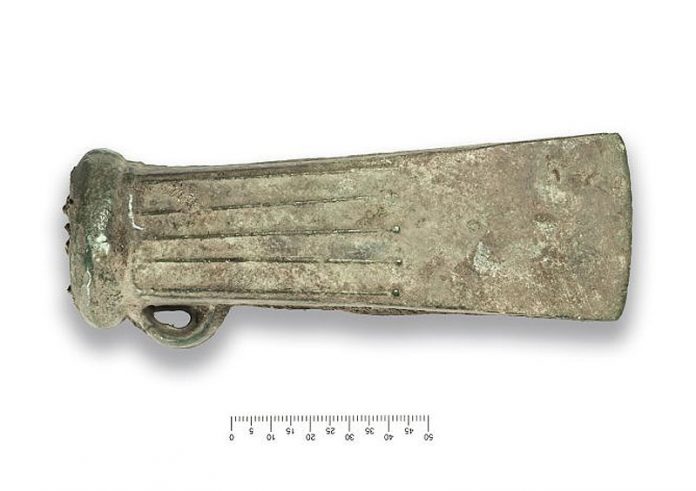This type of socketed axeare typical of the Hallstatt C phase in southern England (c.700–600 bc) at the transition between the late Bronze Age and the early Iron Age. Sompting axes are so named after seventeen of them were found together in a hoard with other objects at Sompting, West Sussex, in 1946. They are made in bronze, of large size, show certain influences from contemporary Armorican axes, and have a pronounced collar with surface decoration comprising raised ribs and pellets.
Ken Welsh of Oxford Archaeology said, “Such a fine example is unlikely to have been lost by accident as it would have been a very valuable object. Axes like this one are often found in watery places and it was probably deliberately placed in the waterhole, perhaps as an offering to the gods.
Source: Oxford Archaeology


